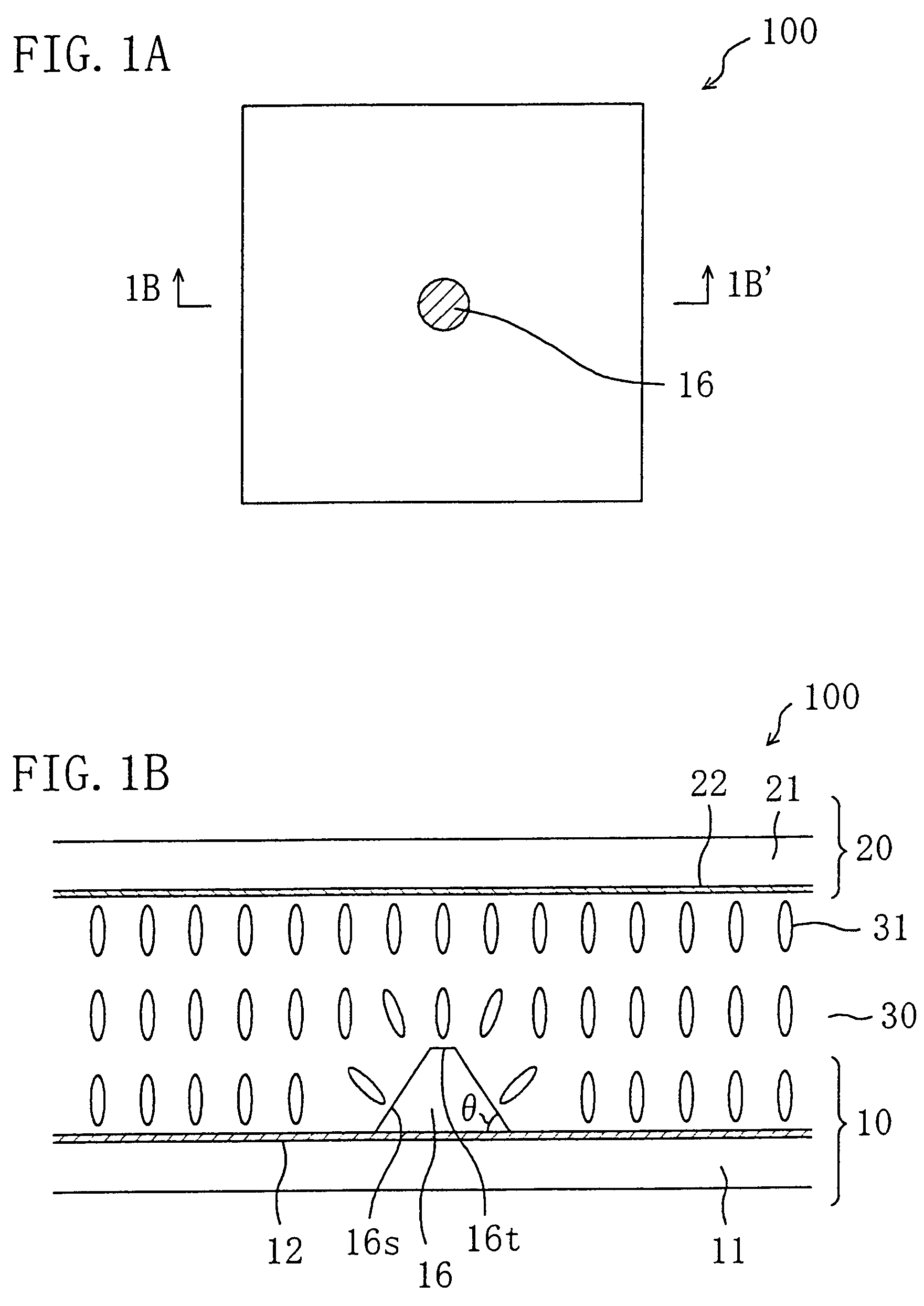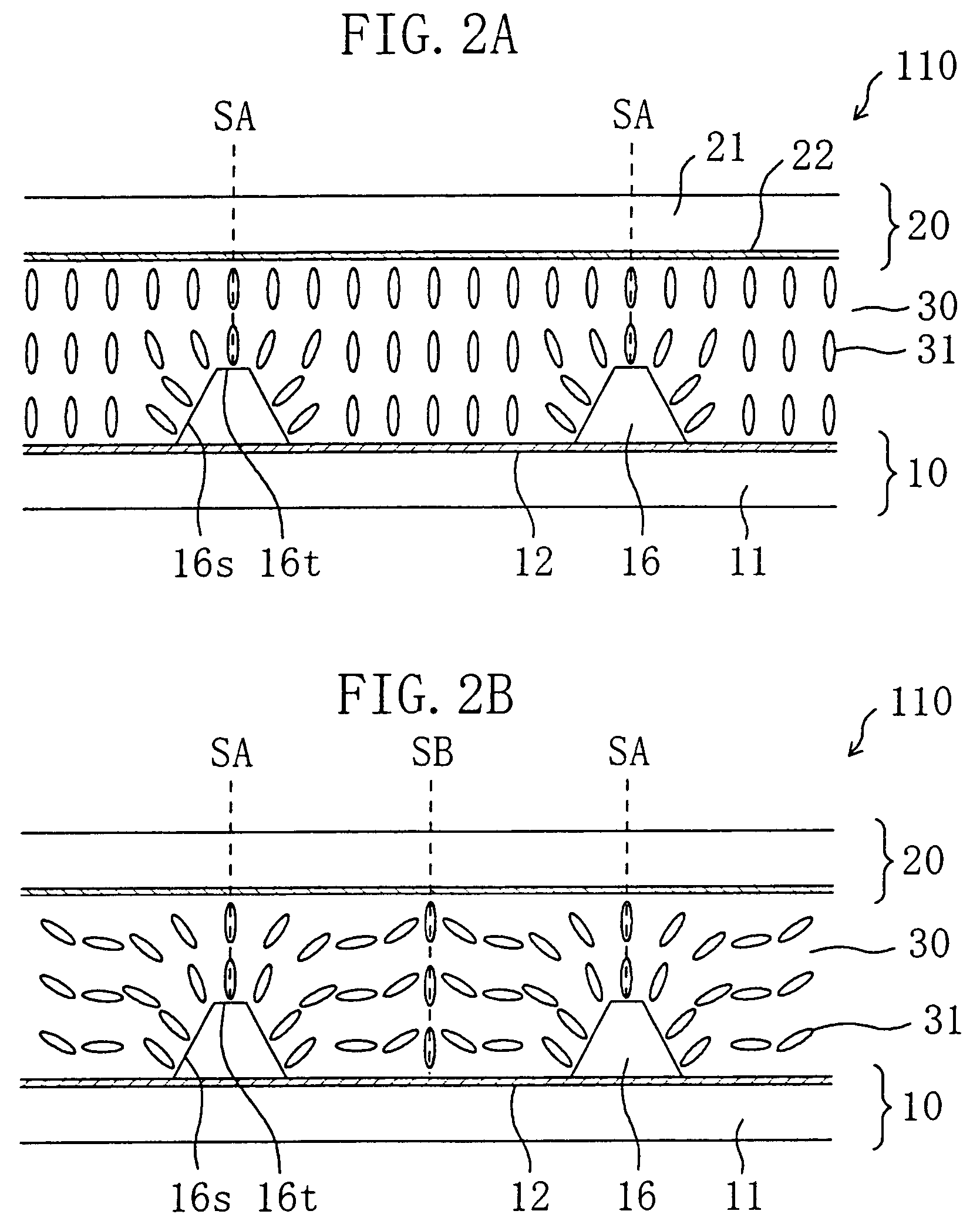Liquid crystal display device having liquid crystal domains with radially-inclined orientation
a liquid crystal display and radial orientation technology, applied in the field of liquid crystal display devices, can solve the problems of super twist nematic, small production margin, narrow viewing angle, etc., and achieve the effect of effectively suppressing discontinuity in the orientation of liquid crystal molecules owing to level differences, stable radial orientation, and easy disturban
- Summary
- Abstract
- Description
- Claims
- Application Information
AI Technical Summary
Benefits of technology
Problems solved by technology
Method used
Image
Examples
embodiment 1
[0107]The liquid crystal display device of this invention is suitably used in an active matrix liquid crystal display device owing to its excellent display characteristic. Active matrix liquid crystal display devices using thin film transistors (TFTs) will be exemplified in the following preferred embodiments, which does not limit the invention. The invention is also applicable to an active matrix liquid crystal display device using MIMs and a passive matrix liquid crystal display device. Also, in the following embodiments, a transmission type liquid crystal display device and a transmission / reflection combination type liquid crystal display device are exemplified, which does not limit the invention. The invention is also applicable to a reflection type liquid crystal display device.
[0108]Herein, a region of a liquid crystal display device corresponding to a “picture element”, that is, a minimum unit of display, is designated as a “picture element region”. In a color liquid crystal ...
embodiment 2
[0160]The stability of the radially-inclined orientation of liquid crystal molecules can be improved according to the invention, and therefore, when the invention is applied to a liquid crystal display device having a structure in which the orientation of liquid crystal molecules easily becomes unstable, the advantage can be remarkably exhibited. For example, in a liquid crystal display device of the so-called multi-gap system including a liquid crystal layer having different thicknesses in one picture element region, such as a transmission / reflection combination type liquid crystal display device having a transmission region and a reflection region in each picture element region, the orientation of liquid crystal molecules are easily disturbed due to a level difference, and hence, it is difficult to obtain stable radially-inclined orientation. For example, it has been found, as a result of examination made by the present inventors, that even when an opening is formed in the electro...
PUM
| Property | Measurement | Unit |
|---|---|---|
| angle | aaaaa | aaaaa |
| angle | aaaaa | aaaaa |
| angle | aaaaa | aaaaa |
Abstract
Description
Claims
Application Information
 Login to View More
Login to View More - R&D
- Intellectual Property
- Life Sciences
- Materials
- Tech Scout
- Unparalleled Data Quality
- Higher Quality Content
- 60% Fewer Hallucinations
Browse by: Latest US Patents, China's latest patents, Technical Efficacy Thesaurus, Application Domain, Technology Topic, Popular Technical Reports.
© 2025 PatSnap. All rights reserved.Legal|Privacy policy|Modern Slavery Act Transparency Statement|Sitemap|About US| Contact US: help@patsnap.com



